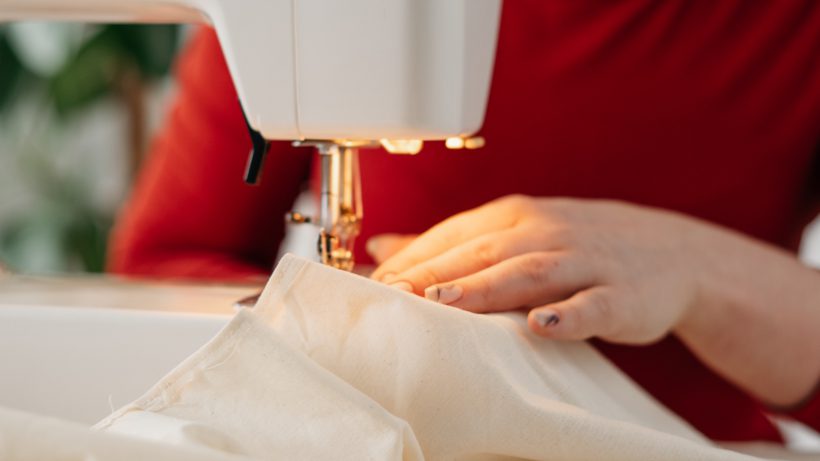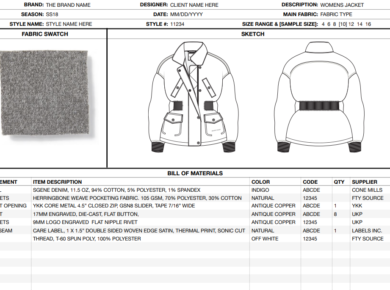For fashion brands and retailers, selecting the right clothing factory or supplier can be a challenging task. With increasing competition and ever-changing customer preferences, it’s essential to work with a clothing factory that can help you stay ahead of the game. In this article, we will discuss the challenges that fashion brands and retailers face in sourcing clothing products and provide insights on how to overcome them.
Selecting the Right Clothing Factory or Supplier
One of the biggest challenges that fashion brands and retailers face is selecting the right clothing factory or supplier. With so many options available, it can be overwhelming to choose a partner that aligns with product quality, commercial, compliance, and sustainability needs for the long term. To overcome this challenge, it’s important to conduct thorough research and due diligence.
While it can be hard to know where to start, here are some topics to keep in mind when determining whether a factory is suitable.
Clothing factories working with similar brands
Researching clothing factories or suppliers that have experience working with fashion brands and retailers of a similar size and have a proven track record of producing high-quality products in that market range is critical to determine in the early stages of your factory/supplier search. This is one of the most important factors in understanding whether a factory is suitable.
Understanding a clothing factory’s customer base and the products they produce for those customers will give an indication of the factory’s setup and capabilities.
For example, a factory that works predominantly with discount retailers like Walmart and Aldi, indicates the factory is set up for working with high volume orders (10,000s of units). Typically these retailers are cost sensitive, which implies they are able to reduce the cost of each item by ordering in high volume.
A factory that is producing predominantly for discount retailers in high volume, therefore, would not be suitable for a smaller brand that is ordering smaller volumes (100s of units).
Long term strategic planning
It is essential to plan what type of factory will be needed for the mid to long term in regard to the factory’s capabilities, volume capacity, product mix, and location. Moving factories frequently can be challenging for small–and even large brands–as it can affect product quality and availability of stock during the changeover between factories. Therefore trying to foresee mid to long-term brand needs and factory requirements can ensure that brands do not outgrow the supplier too quickly.
Factories’ capabilities – will the factory need to have specific capabilities like:
- In house design
- Garment Dyeing
- Embroidery
Volume Capacity
As a fashion brand grows, planning future ordering volumes (the next 1-2 years) will help determine whether the factory has the capacity to grow with the business. A factory that is growing and adding additional capacity with new factories could be suitable for a scale-up fashion brand also growing fast as the factory would be able to continue to service its volume.
Working closely with the factory to understand its business trajectory and how the factory owners are planning their business will help to determine whether their volume is suitable for fashion brands.
Product Mix
Is the brand looking to develop additional products in the mid to long term? Is it possible for these products to be produced by the same factory? If so, then working with a factory that already produces both the current and future in-market products would be helpful as it would allow fashion brands to continue working with the same factory for longer.
Again, knowing the products a factory produces is extremely valuable in deciding whether a factory has potential to be a long-term partner or not.
Location
Is the fashion brand looking to expand new countries they sell to?
Planning where future potential customers could be may affect which country they should source from.
For example, a UK fashion brand that is looking to open distribution in the US could consider nearshoring from Mexico or Europe over Asia as the lower lead time could be advantageous in getting products to market quicker.
Managing Costs
Another challenge that fashion brands and retailers face is managing costs and margin. With increasing competition, it’s essential to keep production costs low while maintaining high-quality standards. To overcome this challenge, consider working with clothing manufacturers in countries where there are preferential duty rates between the exporting and importing countries.
Ensuring Ethical and Sustainable Practices
In today’s fashion industry, ethical and sustainable practices are becoming increasingly important. Fashion brands and retailers need to ensure their clothing manufacturing partners uphold ethical labour practices and promote sustainable sourcing practices. It’s important to conduct due diligence and choose clothing manufacturers or suppliers that have a proven track record of upholding ethical and sustainable practices.
This can be achieved by working with factories that have the correct certification and compliance.
There are many certification organisations and bodies that work to improve the standards of clothing factories in regard to their social, environmental, and governance perspective. Certifications typically have set criteria that check a factory’s capabilities and setup. The clothing factory needs to reach a certain standard in order to obtain the certification.
To find out more on selecting the right clothing factory – READ OUR BLOG HERE






